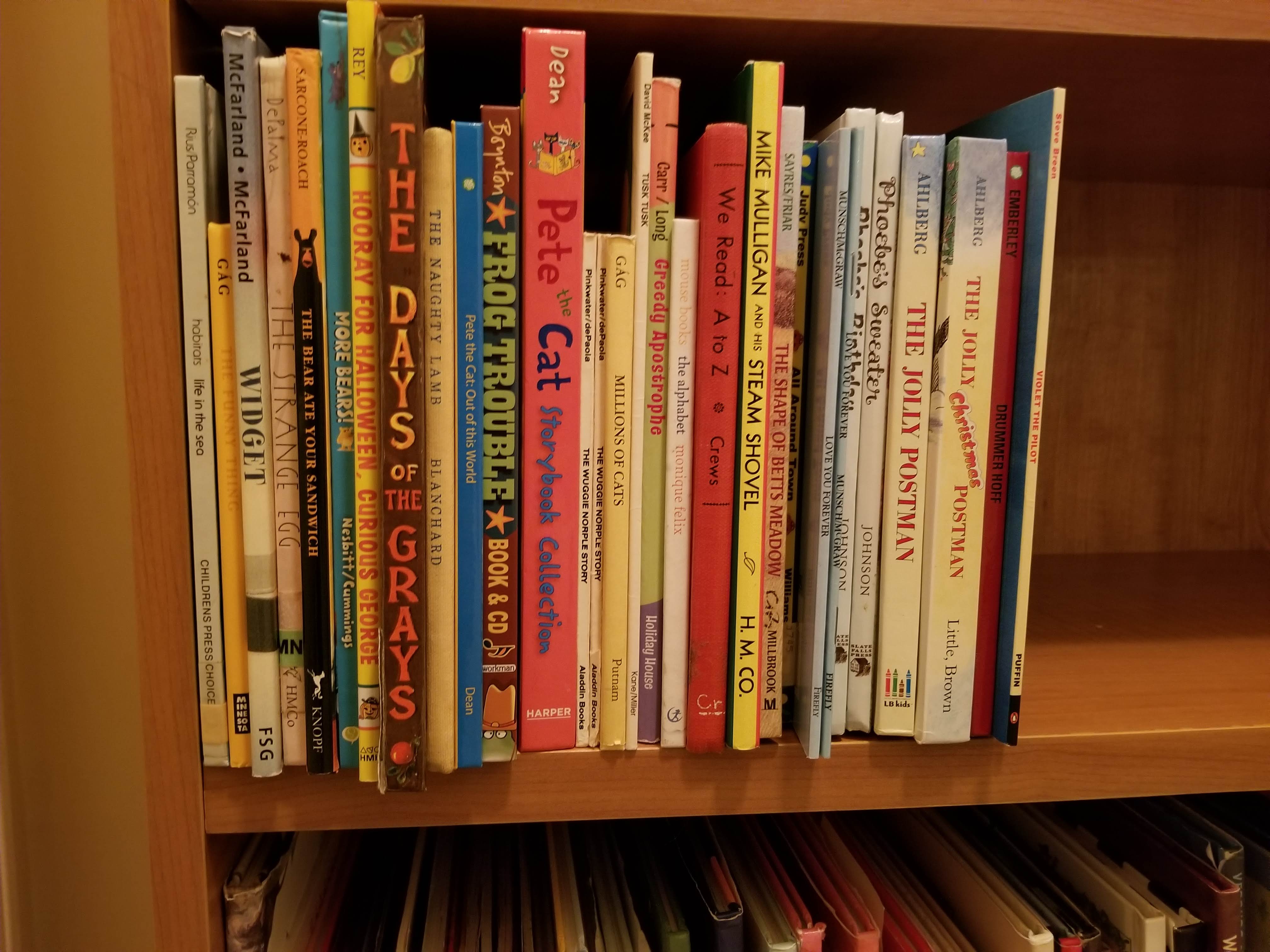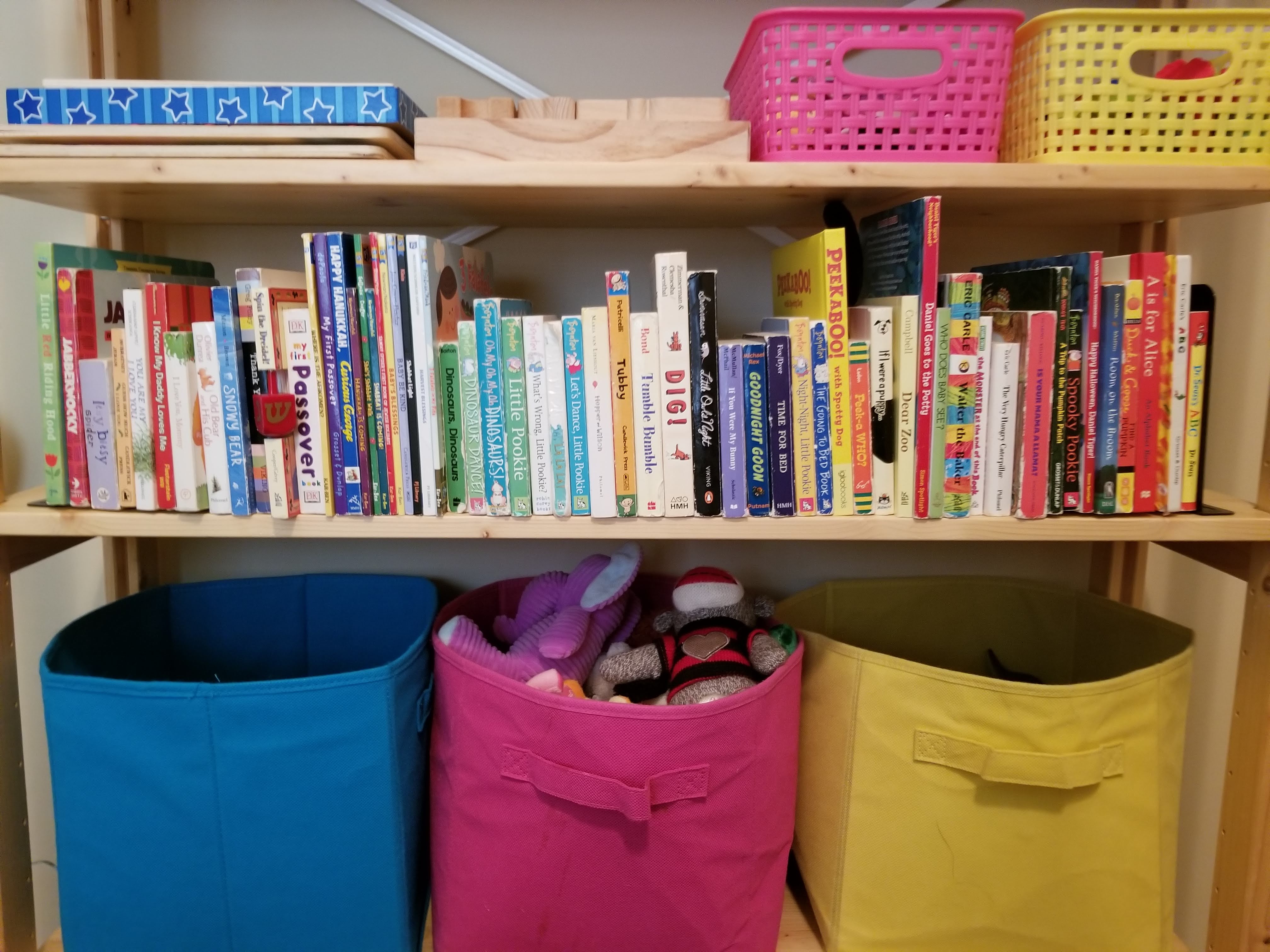Organizing your child's home library
By Marti Fuerst, HMCPL Systems Librarian
When we are cooped up inside, many of us look at reorganizing our spaces. We often turn to shows like Tidying Up with Marie Kondo and Organize It, along with the books written by their stars, to help us face the chaos on our shelves and in our drawers.
Marie Kondo’s simple minimalism isn’t for everyone, and the extravagant container-based systems of The Home Edit can easily be out of someone’s financial reach. But watching the ladies of The Home Edit organize the books in an after-school center by color got to me.
Kids are great at categorizing things. So why limit categorizing your children’s books by color, when you can take it a step further and help them develop greater understanding by categorizing the books by subject? I’m not saying you should whip out the label maker and assign Dewey Decimal numbers to your kid’s books, but simple subject categories can make it easier for both you and your child to find the books you want on the shelf - and to keep track of what you have.

Before I started organizing my children’s books, I pulled out titles that they had outgrown and didn’t hold any sentimental value, titles we have multiple copies of, and titles that were beyond repair. These will be donated (or in the case of the damaged books, recycled). In library-land, we call this process “weeding,” and it is as essential to your book collection as it is to your garden. It helps you make sure that the books you have available to your child are relevant to their interests and reading level. It also gives you an opportunity to assess what you have, and see if there are any gaps that need to be filled.
In our house, we keep most of the board books in my younger child’s room, on a shelf that she can reach easily. The rest of the children’s books are on a shelf in the hall between the two children’s bedrooms. The board books are shelved according to loosely assigned subject. Below is a list of my categories - obviously, this breakdown is going to vary by household depending on what you have, but some might be the same.
- Classics: This includes classic literature adaptations for babies as well as classic titles, like There’s a Monster at the End of This Book and The Very Hungry Caterpillar.
- Alphabet Books: Anything ABC focused goes here.
- Peek-a-book, lift-the-flap, and other “puzzle” books: This also includes sensory books.
- Judaism: These are books about Jewish holidays, culture, and Israel.
- Bedtime: This collection might move to the nightstand when we transition our daughter to her “big girl bed” for easy access.
- Halloween: This is it’s own category because we have a significant (more than 3) number of them.
- Dinosaurs: Self-explanatory - books with dinosaurs.
- Animal Stories: There are some animal stories in other categories, like Classics, Bedtime, Halloween, and Judaism, but this category is for stories with animal characters that don’t fit in one of those other categories.

My son’s books have a lot of the same categories as my daughter’s, but because shelving books of significantly different sizes together can make it hard to everything, they are also separated by size. I did try to keep categories together vertically as well - so the tall dinosaur books on the bottom shelf are below the smaller dinosaur books on the next shelf up, and so on. His additional categories include:
- Nonfiction: The books in this section are loosely grouped by smaller categories or series, such as books about animals, or the Charlie Brown Super Books of Questions.
- People: These are stories about people or animals acting like people, as opposed to animals acting like animals.
- Animals: These are stories about animals being animals, and are loosely grouped by type of animal.
- Short Stories and Poem Collections: This is primarily a series of books I had as a child published by Fischer Price and Time Life for Children.
- Supplemental School Books: We have some titles from the Moving Beyond the Page curriculum which we shelve together so we can easily grab the “school books.”
- Dr. Seuss: These are shelved right next to the Ready Readers, since they are also books my son can read by himself.
- Ready Readers/Beginning to Read: This includes our small collection of Little Golden Books and all the slim little paperbacks my son can read on his own.
- Seek and Find: Puzzle books and other books where the focus is on finding things in large pictures.
- Books to Grow Into: These are longer chapter books or else very old picture books from my or my husband’s childhood. Since they are children’s titles, they live on this bookshelf, but are on the top shelf.
- Pop-up Books/Books that Require Supervision: We have a small collection of delicate pop-up books that are also shelved on the top shelf to ensure that a parent is present when our children look at them, to help preserve the life of the book.
- Larger Board Books: These board books are too tall for my daughter’s bookshelf, so they are shelved on the bottom shelf of the hall bookshelf so that she can easily access them.
- Library Books: Since the majority of the shelves have books aligned to the left, we have some space to the right to put books from the library so they don’t get lost in our own collections, especially since some of our books are library discards.
My son’s nightstand is a looser collection of bedtime books and books he’s currently reading. About once a week, I go through the nightstand shelf to find titles that need to go back home to the bigger shelf, or items that need to be returned to the library.

I ordered some metal bookends to keep the books from falling over. I still have plenty of space for other items, like puzzles or games, or more books. I’m planning on making some dividers out of card stock and laminating them so that I can better designate the sections and help teach my children how to put their books away correctly.
While shelving books by color may be more visually appealing, the benefits end there. Your children will benefit from the hands-on information literacy experience which comes from shelving their books by category. The hands-on experience of finding a book based on subject matter lays the foundation for efficient keyword searches as they age. We encourage children not to judge books by their cover, but rather by the content of the book itself. Encourage them to do just that by shelving the books by what's inside, focusing on a more comprehensive understanding of the world around them rather than just superficial attributes. Don’t pass up the opportunity to help your child develop these critical-thinking skills which are necessary in today’s search-heavy world.
